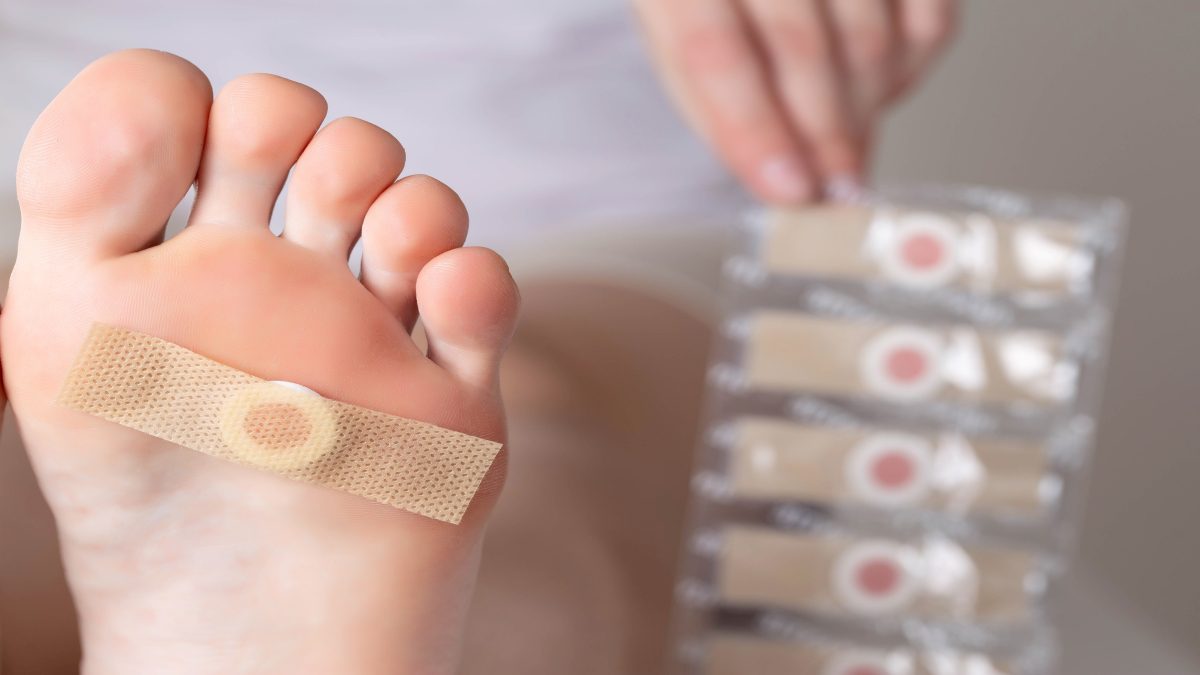Treatment of corns and calluses
Corns and calluses treatment typically includes the avoidance of the activities that led to their development. In addition, they can be helped to resolve by taking measures like using protecting padding and wearing shoes that fit properly.
If corns and calluses persist or worsen even with efforts at self-care, they can be treated by:
Non-surgical treatment
- Trimming: A physician can trim away the thick skin or pare down painful corn using a sterile blade. This procedure typically takes place in the doctor’s office. Do not do this yourself due to the risk of infection and bleeding.
- Callus-removing medication. Physicians sometimes use patches that contain salicylic acid for hand and foot corns treatment. These can also be purchased over-the-counter. Typically, any dead skin is smoothed away before re-applying a new patch. If a large area needs to be treated, you may be given a prescription for salicylic acid gel.
- Medication to reduce infection risk. Antibiotic ointments are sometimes applied to decrease the chance of infection, but these won’t make corns and calluses go away.
- Shoe inserts. If a foot deformity is causing corns and calluses formation, special inserts may be prescribed by your doctor to wear in your shoes as a preventative measure.
Corns and calluses surgery
In rare cases, surgery is recommended to realign the foot bone if this is the reason for the formation of corns and calluses.
Prevention of corns and calluses formation
The following suggestions may help prevent the formation of corns and calluses:
- Wear shoes that fit. Your shoes need to allow plenty of space for your toes. Never wear shoes that are too tight. Try shoes on before buying them and shop for shoes at the end of the day when your feet are the biggest.
- Use protection. Try pads made of felt, toe separators, or even lambs wool to protect the spaces between your toes. Cover areas that rub against your shoes with bandages.
- Wear gloves working with hand tools. You can also pad the handles of your tools with cloth covers or soft tape to prevent hand corns and calluses formation.
Useful Advice
If you have diabetes or have poor circulation to your feet or hands, don’t self-treat corns and calluses without consulting with your health care provider.
If you are in good general health with no other major health problems, these suggestions may be helpful in treating corns and calluses:
- Over-the-counter pads. You can carefully apply these to protect a corn or callus area. Use caution when using medicated corn plasters or corn removers. They contain an acid that can cause irritation to healthy skin, leading to infection.
- Soak to soften. Soaking the feet or hands in warm water can help soften corns and calluses and make it easier to take off the thick skin. Never cut the skin, only gently rub or file it.
- Make thickened skin thinner. After soaking, showering, or bathing, use a washcloth, pumice stone, nail file, or emery board to help take off the tough outer skin. Don’t clip, cut or trim skin with anything sharp. People with diabetes and people with poor blood flow should not use pumice stones due to the increased risk of infection.
- Moisturize. Skin moisturizer can be applied to the feet and hands to help keep the skin soft. Avoid getting lotion between the toes because this encourages the growth of fungal infections, especially in people with diabetes.
- Wear shoes and socks that are comfortable. Wear footwear that is well-cushioned and comfortable. Removing friction and pressure will help corns and calluses disappear more quickly.
















Leave a Reply
You must be logged in to post a comment.